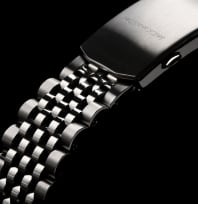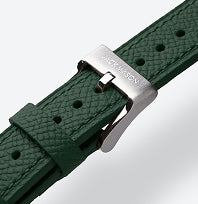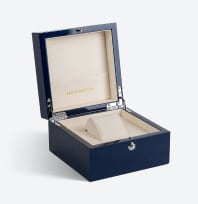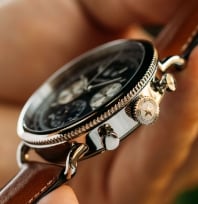Water is called the universal solvent for a reason. The liquid is capable of doing everything from removing dried food from dishes to eroding mountains.
Water can rust metal, damage organic materials, and yet, despite its awesome power, it is necessary for life. Water is necessary for all living creatures and is found everywhere, from oceans to rain clouds.
Water is essential to human life. However, it is also essential for people to have things that are able to stand up to water. This includes shelter, clothing, and accessories. Most clothes protect against water to a certain extent, but only special garments are allowed the designation of “waterproof.”
Confusingly, other garments are labeled as “water-resistant.” Some accessories, like watches, are only ever labeled water-resistant and never waterproof. To some extent, the difference between waterproof and water-resistant products can be intuited by the level of protection they imply.
At heart, however, the difference between waterproof and water-resistant contains both manufacturing differences and legal implications.
What Makes a Product Water-Proof?
A water-proof product is one that is innately repellent or resistant to water. This includes a wide variety of synthetic materials in garments and rubber in other objects. Waterproof items will eventually break down but take an exceptionally long time to do so. The deciding factor between waterproof and water-resistant products is the extent to which a product resists water.
A wetsuit is made of material that responds well in response to water and—in fact—may operate better under wet conditions. Even if the material were split with a knife and laid flat, it would still react well because of its natural properties.
This can be compared to a normal cotton shirt, which would almost instantly become saturated and heavy. Waterproof products are defined by their innate survivability underwater.
What Makes a Product Water-Resistant?
Water-resistant products are ones that have some waterproofing measures to offer protection. Water-resistant raincoats are not fully waterproofed but may have a coating or finish to protect the exterior from saturation. In many cases, these measures occur in order to protect products that would otherwise be at risk of damage from moisture.
Leather is notoriously vulnerable to moisture. This is doubly true for suede leather products. Numerous products exist to add water resistance to leather and suede shoes. These usually take the form of a spray that settles on the shoe and forms a thin protective layer.
The important distinguishing factor is this: Water-resistant products do not have the high-powered innate qualities that waterproof products have. However, their effectiveness can be maintained through other measures.
It is necessary to note that many things cannot be made totally waterproof. Water-resistant measures in cases like this serve to allow them to operate under normal wear and tear in safety. This should be kept in mind when asking our next question: Can a watch be made waterproof?
Can a Watch Be Waterproof?
If you examine older watches, you may encounter antique watches using the term waterproof, while more recent offerings say “water-resistant.” This does not mean that waterproofing technology has recessed in recent years.
Rather, due to an increased emphasis on trade honesty, international organizations have condemned the use of “waterproof” in watch advertising.
In the early 20th century, the first supposedly waterproof watch appeared on the market. In truth, the timepiece was a massive leap in craftsmanship from any waterproofing measures made in horology before.
However, the piece was only suitable for intense swimming and light diving; it was not truly waterproof. This still saw the start of a movement to create a truly water-appropriate timepiece.
Taken individually, the components of a watch do not lend themselves to moisture exposure. Batteries can short out under exposure to water, and metal gears rust to the point of obsolescence.
If water breaches the inside of a watch, the timepiece faces a severe risk of destruction no matter what else. This fragility is what makes it impossible for a watch to be truly waterproof.
Despite the danger water presents to a watch, horologists make timepieces fit to function in all manner of circumstances. Dress watches may only see occasional moisture, but dive watches must be carefully designed to operate in the ocean depths.
Calling these timepieces waterproof would be disingenuous, but thanks to precise design choices, competitive water resistance is within reach.
What Makes a Watch Water-Resistant?
The water resistance of a watch is achieved through both careful consideration of design and material. The first major hurdle a watchmaker has to face is the threat of water entering a timepiece. This hurdle is solved by introducing a material whose hydrophobic properties see it used in tens of thousands of products: Rubber.
Rubber gaskets are used to create water-tight seals in everything from industrial machinery, to cars, to minute timepieces. Small o-rings are precisely sized to seal the gaps where external-facing components of a watch meet. These are usually covered in grease-based lubricant to further protect the gasket and improve its lifespan. This is mostly what prevents water from entering a timepiece.
Rubber gaskets lose their strength over time and eventually will need replacing in order to maintain the watch’s protection. A watch gasket, under regular use in the context of saltwater, will still last for years. Other elements still exist to provide additional safeguards.
The composition of a watch case also affects the way it responds to moisture. Precious metals are all highly corrosion resistant but also costly and potentially easily scratched. High-grade, industrial materials like stainless steel make the best companions for dive watches that see extensive aquatic use.
Design principles make for great theoretical designs. Only in execution can a watchmaker combine aesthetics and function in one piece.
Water Resistance in Watches
Most modern watches have water resistance information readily available. It is measured in either meters or atmospheres, the latter of which is equal to ten meters. A watch tested at a certain stated depth should, in theory, work at that depth. However, calculating the true water resistance of a watch is slightly more complicated.
Water resistance refers to the passive pressure exerted by a body of water at a given depth. Movement of any kind will increase the pressure exerted on the watch. For this reason, a watch with 30 meters of water resistance won’t be effective at a depth of 30 meters.
A great, swim-appropriate watch should have a water resistance of 100 meters. Once this resistance marker is exceeded, we enter the world of the dive watch.
Water-Resistant Watches
With a water resistance of 300 meters, Jack Mason’s Seatrek Automatic shows what is possible when protective principles meet artistry. Every aspect of the piece, from the case to the dial to the strap, is created with sea-worthiness in mind.
Aesthetically, the case is made from pristine, marine-grade stainless steel. A bathysphere sculpted on the caseback highlights the century-long history of diving culture.
This aesthetic choice is merited by the aforementioned water resistance, a screw-down crown, and a unidirectional bezel. The last of these is essential as a tool in timing dives.
Bold luminosity markers on the hands and indices also help with legibility in dark waters or late at night. A sapphire crystal, the most durable traditional crystal material, gives protection from all manner of shocks beyond water.
The Seatrek Automatic takes its name both from its nautical prowess as well as the automatic movement behind it. This gives the watch a subtle but substantial feel on the wrist. Two versions of the Seatrek Automatic exist with similar properties but differing visuals.
Different Variations of the Seatrek Automatic
One embraces the subtlety of monochrome with a black dial with white markers. This understated color scheme is only broken by a blue “Automatic” marker and a dash of red on the second hand.
The other uses a navy dial for a strong contrast with a black bezel. Here, most lettering is in white, but a significant orange presence gives the piece a sporty appearance.
The Seatrek Automatic comes with two straps, interchangeable thanks to quick-release pins. One is a rubber strap to sleekly fit with any outfit on aquatic excursions. The other is a 316L stainless steel bracelet.
It is appropriate at sea for marine-grade corrosion resistance and at land for style. The bracelet also comes with a divers extension, allowing it to be easily worn over other pieces of diving equipment.
Waterproof vs. Water-Resistant
Without examining their names, it may initially seem that waterproof products are superior to water-resistant ones. Water-proof implies a greater resistance to water, which is an accurate assessment.
However, the question to ask about water-resistant products is the following: How water-resistant is it?
Some things, from fine leather goods to delicate timepieces, will never be waterproof. However, they can be made water-resistant to the point where they are usable far beneath the waves.
When examining a water-resistant watch, it’s critical to know the depth to which it is resistant and what that implies. The right timepiece can be usable on land as well as below the ocean depths while exuding style everywhere.
Sources:









